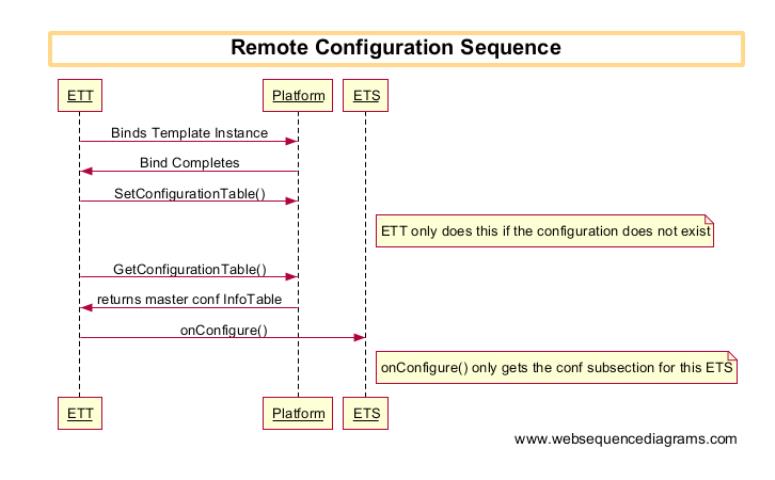Remote Configuration
The following sequence diagram illustrates the life cycle for remote configuration of an ETS; the section following the diagram provides additional details about the sequence:

How Remote Configuration Works
1. A remote thing is created on ThingWorx platform to represent an edge thing whose ETT has one or more Edge Thing Shapes.
2. The edge thing connects to ThingWorx platform and is bound to a remote thing.
Binding the edge thing to the remote thing also binds the Edge Thing Shapes to the remote thing.
3. If a configuration for an ETS does not exist on the platform, the ETT calls SetConfigurationTable to send up a configuration infotable. If the configuration exists, this step is skipped.
4. Once the edge thing is bound, its ETT calls onConfigure() (using an event such as onBind) for all of its child Edge Thing Shapes.
The ETT calls the GetConfigurationTable service on the remote thing that is bound to the edge thing to obtain the configuration infotable that exists on ThingWorx platform.
The configuration is returned as a sub-infotable of the configuration infotable that was obtained from the remote thing.
If this is the first bind, the configuration infotable from the ETT becomes the configuration infotable of the remote thing.
The child infotable is named using the name for the ETS. The getIdentifier() function of the ETS returns the name.
5. Later, when a user modifies the configuration from Composer, ThingWorx platform is responsible for pushing the changed configuration back to the ETT on the edge thing. The ETT then must call onConfigure for each ETS whose configuration has changed.